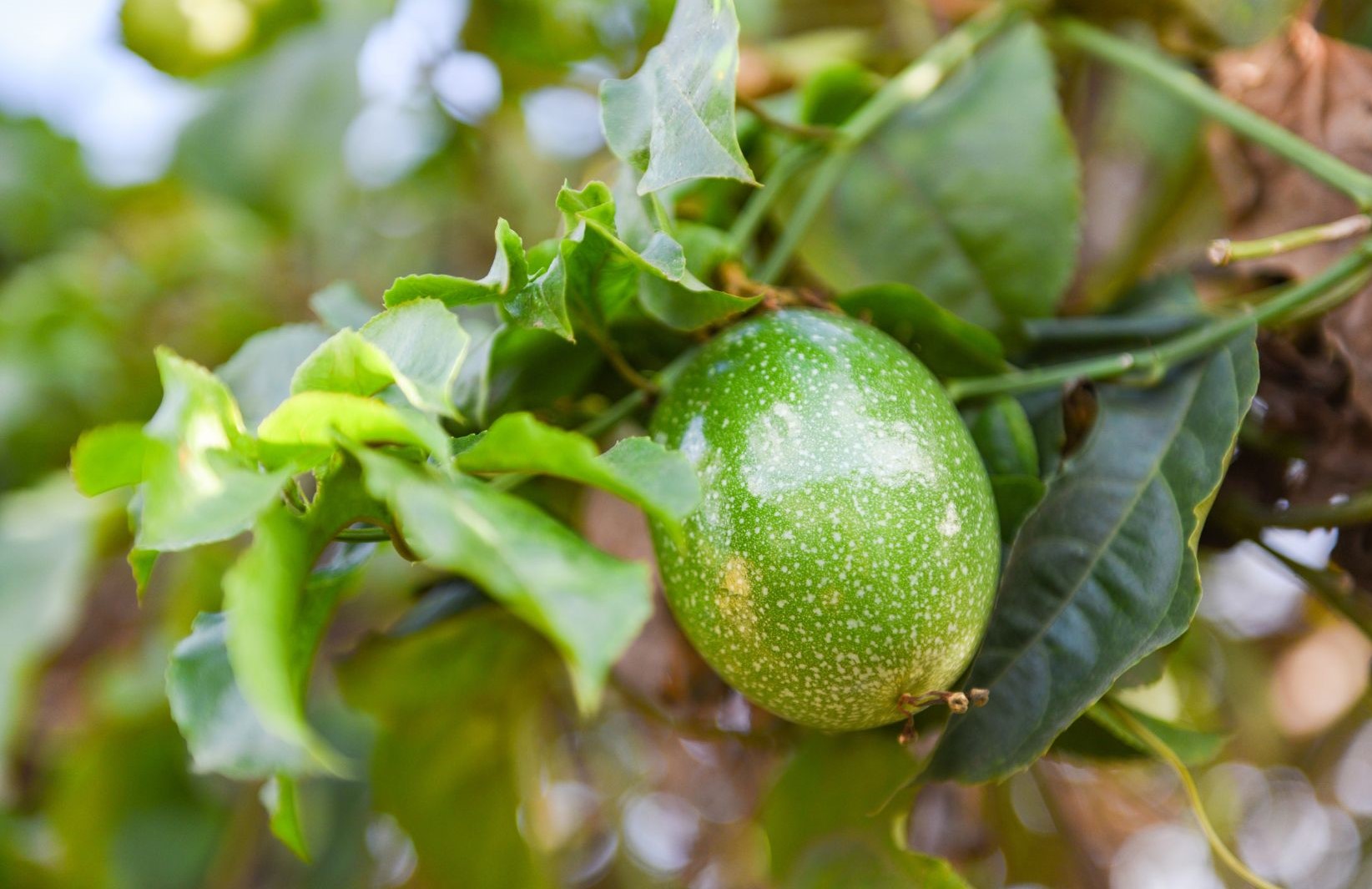Passion Fruit Plant Care: Irrigation and Fertilization of Passion Fruit
Irrigation and Water needs of passion fruit
Passion fruit has moderate to high water requirements, and adequate soil moisture is required to maintain good plant establishment, vigorous vegetative growth, and high production of passion fruit vines. Passion fruit needs a minimum of 889 mm (35 in) of rainfall annually, while the optimum is around 2000 mm (78 in). The purple-type varieties are more resistant to water scarcity than the yellow-type passion fruit. However, over-irrigation can also negatively affect passion fruit plants, increasing plants’ susceptibility to root rot and soil-born diseases.
Irrigate the young and newly established passion fruit seedlings, whenever necessary, during the first season of its growth to facilitate the establishment and vegetative growth. For matured trees, the water needs are maximum during flowering, fruit set, and fruit maturation. Irrigation during these stages may be necessary, especially since they coincide with the driest period of the season. If the plants are under drought stress or do not receive sufficient water when the fruits are formed, they will shrivel and drop, and the yield and fruit quality will drop. Water increases the number of fruits per panicle and also minimizes fruit losses. After the fruit-set, full irrigation should be applied to encourage a flush for fruit growth.
The irrigation amount and frequency may vary depending on the variety and the local environmental conditions. In some cases, passion fruit may need irrigation:
- once every 4 weeks during summer,
- once a week (with 20-60 or even 400 liters of water per vine) or
- daily with 4 liters of water per vine
By applying half the calculated volume of water per tree after the moisture-stress period, new growth is retarded, competition with the young fruit is restricted, and fewer fruit will abort.
Irrigation systems for passion fruit
Fruit trees are very sensitive to water-logged conditions as well as to drought stress. In regions where the annual rainfall is not sufficient or well distributed, the farmer needs to irrigate. The aim of irrigation is to maintain the soil-moisture content between these two extremes, except when a drier period is required to stimulate flowering. Among the available irrigation systems, the most suitable for passion fruit irrigation are the micro-sprinklers and drip systems due to their higher efficiency. These “smart systems” allow the farmer to program his/her irrigation with higher precision and automatically by using timers.
Irrigation can be coupled with moisture conservation practices such as mulching, maintaining good vegetation between rows, and shallow cultivation.
Fertilization of passion fruit
Passion vines are heavy feeders, but over-fertilization may damage the roots. The amount of fertilizers depends on the size and age of the passion fruit plant and can be determined by experience and soil analysis tests.
Sufficient nutrient availability is essential in young passion fruit orchards to boost the vegetative growth of young plants. Except for the application of compost or manure (10 kg per plant)that a farmer could add before planting, many choose to apply 60-110 grams (2-4 oz) of complete fertilizer of 10-5-20 (Nitrogen-Phosphorus-Potassium, N-P-K) per plant. This application can be repeated 6 weeks after planting.
Fertilization of mature passion fruit trees aims to stimulate vegetative growth (lateral, secondary vines). Usually, 300-500 grams of complete fertilizer and 200-300 grams of urea per tree are used, applied in 2 equal doses at the start and before the end of the rainy season.
For bearing trees, farmers apply higher amounts of fertilizers to cover the nutrients lost with the harvest of the fruits. Usually, around 1-2 kg of complete fertilizer (10-10-10 or 17:17:17 or 10-5-20) is applied per tree, split into two-tree applications. The fertilizer should be evenly spread around the plant trunk at a distance of 45 cm (18 in.). Watering or rainfalls right after the fertilizer application will help to incorporate it into the soil. Excessive nitrogen applications should be avoided to facilitate flowering, especially in fruit-bearing passion fruits. If the plants have experienced frost damage, fertilization should be applied to help them recover when the temperature rises again.
Passion fruit vines grown on slightly acidic, sandy soils require a balanced fertilizer that provides approximately equal proportions of nitrogen, phosphorus, and potassium. It is also important to include essential micronutrients such as magnesium, manganese, copper, zinc, and iron. On alkaline soils, the demand for phosphorus is lower than for nitrogen and potash, but it is still necessary to apply micronutrients for optimal growth and production. One recommended approach is administering these micronutrients four times a year through foliar sprays. Iron chelates can be directly applied to the soil near the root zone in a solution form. Similarly, many passion fruit orchards suffer from boron deficiency and the vines should be sprayed every year with 100 g of borax. Regular monitoring for nutrient deficiencies is crucial, with particular attention given to potassium and calcium deficiencies, while magnesium deficiency is less significant.
References
- https://naads.or.ug/passion-fruit-production/
- https://www.cabidigitallibrary.org
- https://www.cambridge.org/core/
- https://edis.ifas.ufl.edu/
- https://citeseerx.ist.psu.edu/
- https://www.dpi.nsw.gov.au
- https://scholarspace.manoa.hawaii.edu/
- https://ufdcimages.uflib.ufl.edu

Further reading
- Passion Fruit: History, Uses and Nutritional value
- Passion fruit: Types-Varieties of Passion Fruit and Plant Characteristics
- Passion Fruit: Soil & Climate Requirements, Land Preparation and Planting
- Propagation and Trellising of Passion Fruit plants
- Training and Pruning of Passion Fruit Plant
- Passion Fruit Plant Care: Irrigation and Fertilization of Passion Fruit
- Important Passion Fruit Diseases
- Important Passion Fruit Pests
- Passion Fruit: Harvest, Yield and Storage









































































